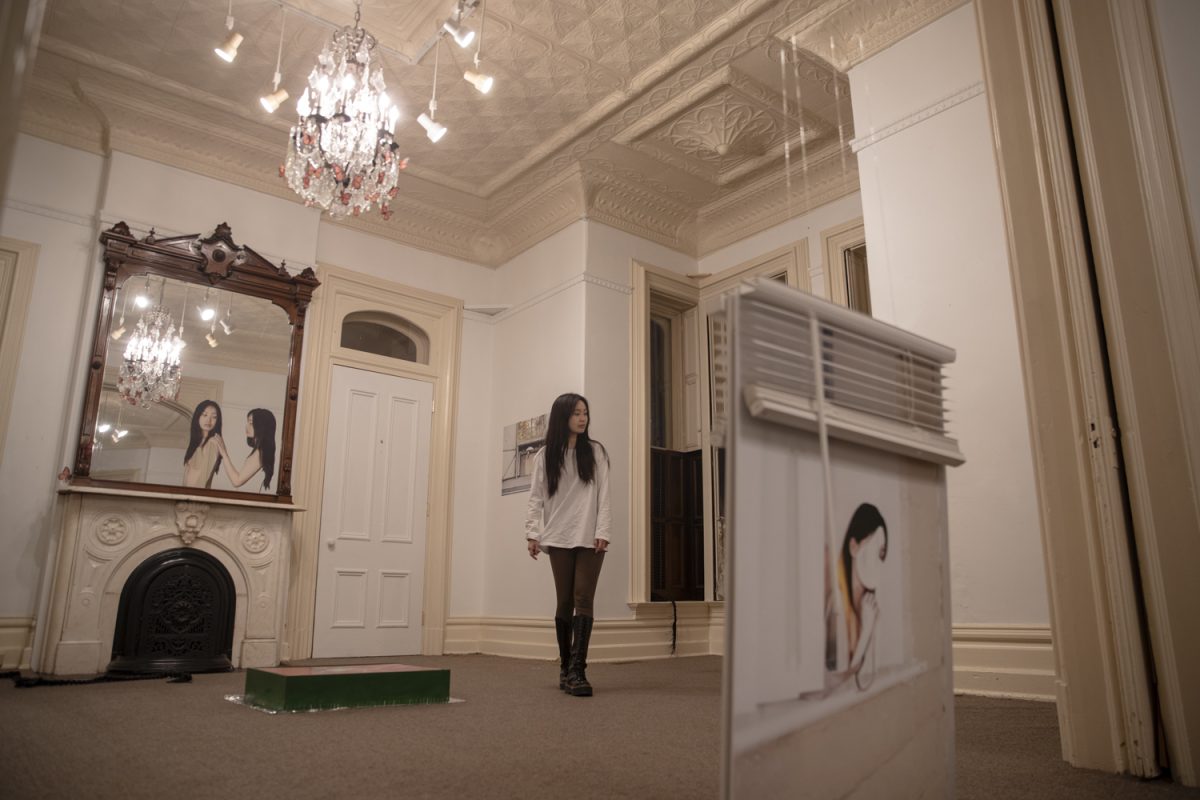A blank screen awaits, an idea longing to be heard; all it takes is the click of mouse, and the creation of a new dimension begins.
The result? An animated film.
After two years of meticulous work, “Touch Free,” a short animation film by Peter Chanthanakone and his colleagues, will première at 6 p.m. today. The film, as well as a short preview of Chanthanakone’s upcoming film, The World’s Top Superhero, will be screened in the 240 Art Building West.
Chanthanakone is a University of Iowa animation instructor, and also a short-film director specializing in 3-D animation.
“I felt regular video was limited; you can only shoot what you can see,” he said. “But with animation, whatever you imagine, you can build.”
A quirky yet emotionally driven film, “Touch Free” contains a life lesson in the guise of comedy.
“It’s about enjoying life and whatever challenges come your way,” Chanthanakone said. “It’s about just having the ability to laugh and smile about it.”
Much of the director’s inspiration for the animation derives from everyday experiences.
Whether he is traveling, searching the Internet, or learning from his students, any object can be designed in the Maya Animation program. Some of the characters in the film are from a popular 3-D Japanese artist, Hiroshi Yoshii. Living in Tokyo, he has been an illustrator and designer for 30 years and has focused on character design for about eight years. Yoshii has also had work published in the New Yorker and some animated videos on Nikon commercials.
“Often, I am inspired just by ordinary things, like walking by a train station,” said Yoshii through his interpreter and ARTas1 publicist Paul Whitney. “I will notice a color combination and use that in my own creations.”
He also said he is constantly doodling every day. For years, he dedicated himself to create at least one character every day, titling it “Daily Work.” Now, he is down to maybe two or three characters a week.
In one of Chanthanakone’s animation classes about character design, he showed images of Superman, Sonic the Hedgehog, and Mario to illustrate the influence of color palettes. He said an animation artist must have a creative mind as well as an attention to detail.
“When it comes to design, you have to look at the context of other characters in the story,” said Sean Robinson, a B.F.A. intermedia student in Chanthanakone’s Animation II class. “You create shapes and colors associated with how you want that character to portray emotion. Before you say a word, someone knows how that character will act.”
Minute details down to the size of the character’s pupil can determine the audience’s reception.
“Just growing up, I loved watching cartoons, and it was so funny to me that characters could come to life,” Robinson said. “It was a total imaginary world outside of our existence. It’s fun to be part of that now. For my own inspiration, I look to the things I enjoyed about cartoons as a kid and take tidbits of those images, mash it together, then see what I get.”
However, with creating animations comes frustration. Many of the animators agreed it is better to take a break and refresh the mind.
“When I get frustrated, I back away from the computer and go on a hike,” said Travis Drilingas, one of Chanthanakone’s collaborators and a senior at Southeast Missouri State University. “I like to find inspiration from the outdoors. Sometimes, I just need a break to clear my head and recuperate.”
The art form allows for the creator’s personality and flair to enhance the quality of the story in a virtual world.
“I don’t really have a background in drawing or sculpting, but I can still make the character look interesting and creative,” said Chris Northcutt, a computer and multimedia graphics graduate student at Southeast Missouri State who helped create a few films with Chanthanakone. “This is one of the best ways for me to express my ideas. I like the overall look and feel to the final product; there is so much creative freedom in 3-D.”
Chanthanakone said the process is collaborative in many ways, because students of a variety of disciplines are able to share ideas with each other.
“There is a lot of feedback, sometimes unexpected, but the work becomes better with new perspectives,” Chanthanakone said. “Animation is a constantly changing medium; there is a lot of exchange of knowledge.”
Screening:






